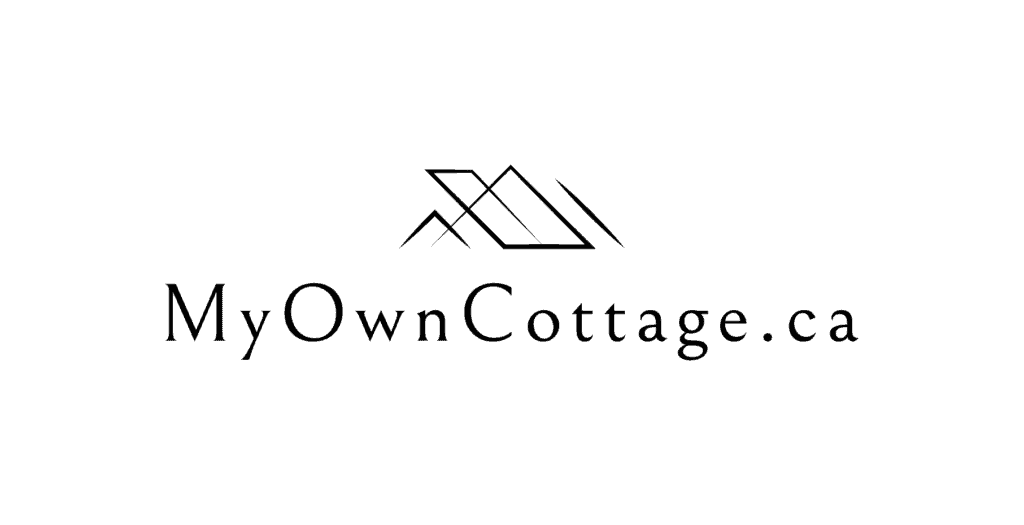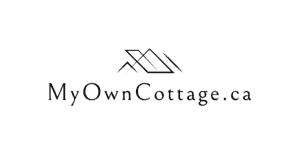Market Outlook for Canadian Prefab Homes
Explore the market outlook for Canadian prefab homes, highlighting trends, growth factors, and the increasing demand for affordable housing.
Discover what the future holds for prefab construction in Canada.
Home » Market Outlook for Canadian Prefab Homes
Market Trends and Future Outlook
In recent years, the demand for prefab homes in Canada has grown significantly.
As the housing market continues to evolve, more Canadians are recognizing the benefits of prefab homes, from affordability to sustainability.
A Look into the Future of Canadian Prefab Homes
This shift is reshaping the housing landscape across the country.
In this article, we explore the future outlook for Canadian prefab homes.
Moreover, we’ll be including growth patterns, how they’re transforming the housing market, and emerging trends that are driving this change.
Market Growth Patterns and Predictions
To start with, prefab homes have experienced a notable surge in demand across Canada.
Further, this growth is expected to continue, driven by a variety of factors, including:
- Rising home prices
- The need for sustainable living solutions
- The growing desire for customizable, energy-efficient homes.
Current Growth of Prefab Homes in Canada
Across provinces like British Columbia, Ontario, Alberta, and the Maritimes, the demand for prefab homes is on the rise.
For instance, in British Columbia, where housing prices in cities like Vancouver have skyrocketed, prefab homes offer a more affordable option without compromising quality.
Similarly, in Ontario, where the rising costs of traditional construction continue to escalate, prefab homes have become an increasingly attractive alternative.
Moreover, this trend is particularly true for first-time homebuyers and families who are seeking quality homes at a lower price.
Gaining Traction in Rural and Remote Areas
In addition, prefab homes are also gaining traction in rural and remote areas, including Alberta, Saskatchewan, and the Maritimes.
The ability to quickly build energy-efficient homes in these areas, especially for family homes and vacation properties, is fueling the demand for modular construction.
Predictions for the Next 5-10 Years
Looking ahead, prefab homes are poised for even greater growth.
To elaborate, industry analysts predict that prefab construction will continue to expand.
In particular, as more Canadians look for affordable, high-quality homes that offer energy efficiency and sustainability, prefabrication is set for intense growth.
Furthermore, over the next 5 to 10 years, the Canadian prefab home market is expected to grow as builders refine their advanced manufacturing processes.
As a result, the prefabrication practice is set to incorporate more sustainable materials and offer even more unique customization options.
The Need for Quick, Efficient Housing Solutions
This expansion is driven by the need for quick, efficient housing solutions in the face of Canada’s housing shortage.
In fact, prefabricated homes are increasingly seen as a viable solution to address both affordability and availability.
As a result, in urban and remote regions alike, the demand for prefab homes continues to dramatically increase.
Prefab Homes Are Reshaping the Canadian Housing Market
Prefab homes are transforming the Canadian housing market in several key ways, from affordability to sustainability.
Impact on Traditional Homebuilding
Prefab homes are changing the way Canadians think about home construction.
Traditional homebuilding can be a lengthy and expensive process, often involving delays, unexpected costs, and waste.
In contrast, modular construction allows homes to be built in a controlled environment, reducing construction time and material waste.
Naturally, this makes prefab homes an efficient and cost-effective option.
It is especially relevant for homebuyers who want to avoid the high costs and time delays associated with traditional site-built homes.
Where Prefab Homes Are Gaining Popularity
Prefab homes are also addressing the need for housing in urban areas where land is scarce and prices are high.
In places like British Columbia and Ontario, the affordability of prefab homes represents a huge advantage.
Now, combined with their energy efficiency and modern design, this makes them a very attractive alternative to traditional homes.
Additionally, as awareness spreads about the advantageous nature of modern prefabricated homes in Canada, the demand seems inevitably set to increase.
Affordability and Accessibility
With rising construction costs, many Canadians are therefore turning to prefab homes as an affordable alternative.
Furthermore, the prefab building process reduces costs in several areas, from labor to materials, thereby making homes more accessible for first-time homebuyers and growing families.
Modular homes, moreover, can be customized in terms of square footage (sq. ft.) and floor plans.
Additionally, this process ensures that homebuyers ultimately get a beautiful home that suits their needs while staying within their budget.
Trends in the Canadian Prefab Housing Market
Prefab homes also provide a quicker solution for housing shortages in Canadian cities and rural areas.
Furthermore, whether it is for a family home in a suburban neighborhood or a vacation home in a remote location, prefab homes are increasingly becoming a go-to choice for Canadians.
Moreover, anyone seeking both affordability and quality owes it to themselves to explore these highly adaptable housing solutions.
Key Players in the Canadian Prefab Homes Market
Several key players are leading the prefab home market in Canada, driving innovation and setting industry standards.
Growing & Established Leaders in Prefabrication
Companies like My Own Cottage are pioneering the prefab housing market in Canada.
My Own Cottage and other established builders are well-known for offering high-quality prefab homes that are customizable, energy-efficient, and built to last.
These companies are shaping the future of prefab homes by focusing on affordability, quality control and customer service.
All this, while building homes that meet local building codes and sustainability standards.
Emerging Players and New Innovations
In addition to established players, a number of emerging companies are bringing fresh ideas and innovations to the prefab housing market.
Furthermore, many of these newer players focus on incorporating modern designs, energy-efficient materials, and sustainable building practices.
Consequently, as these companies grow, they are helping to expand the market and make prefab homes more accessible to a wider range of homebuyers.
One major trend in the industry, for example, is the integration of smart home technology into prefab homes.
Additionally, as more homebuyers seek homes with advanced technology and energy-efficient systems, prefab homes are evolving to meet these demands.
Emerging Trends in the Prefab Housing Market
Several key trends are shaping the future of prefab homes in Canada.
These trends reflect the growing interest in sustainable living, customization, and modern design.
Sustainable Homes
Sustainability is becoming a primary concern for homebuyers, and, as a result, prefab homes are uniquely positioned to meet this demand.
Prefabricated homes are often built with energy-efficient features.
Furthermore, this includes items such as superior insulation, low-energy appliances, and passive heating and cooling systems.
Additionally, many prefab homes are also constructed using sustainable materials.
Naturally, this is making them an eco-friendly choice for homebuyers who prioritize environmental responsibility.
Consequently, with the growing emphasis on reducing carbon footprints and lowering energy consumption, prefab homes are being seen as a solution to Canada’s sustainability goals.
In fact, this trend is especially relevant in provinces like British Columbia, where eco-friendly building practices are a priority.
Customization for Canadians
Customization is a key factor driving the demand for prefab homes.
For instance, homebuyers can choose from a variety of floor plans, home plans, and designs, all to create a home that fits their specific needs and tastes.
Whether it’s a family home with multiple bedrooms or a minimalist design with an open living room, prefab homes offer both flexibility and a wide range of personalization options.
Modern Design to Suit Canadian Tastes
Modern design is another factor contributing to the popularity of prefab homes.
Homebuyers are increasingly attracted to contemporary, stylish designs that reflect their lifestyle.
Prefab homes allow for sleek, modern aesthetics without the high costs of traditional construction.
Prefab Homes for Remote Locations
Prefab homes are also playing an important role in providing housing solutions for remote locations.
In regions like the Maritimes, Alberta, and northern Canada, where traditional construction may be challenging, prefab homes offer a practical, efficient solution.
Here, building prefab homes in harsh climates is a necessity to address ongoing housing demands.
Moreover, these homes are easy to transport and assemble, even in difficult conditions.
In summary, this is making them ideal for vacation homes, second properties, or remote community housing.
Construction Process and Efficiency
The construction process for prefab homes is one of the key reasons why they are gaining popularity in Canada.
Unlike traditional homes, which can take months to build, prefab homes are constructed in a controlled environment and then assembled on-site.
Moreover, this process significantly reduces construction time and minimizes the risk of delays.
Further, this streamlined process allows for faster delivery and reduced costs for homebuyers.
Cost-Effective and Environmentally Friendly
Prefab homes are also built with less waste.
The controlled environment in which they are constructed ensures that materials are used efficiently, which is both cost-effective and environmentally friendly.
Additionally, prefab homes are built to meet high standards of quality control, ensuring that each home is durable, safe, and high-quality.
Future Outlook for Canadian Prefab Homes
The future of Canadian prefab homes is bright, with increasing demand driven by affordability, sustainability, and the growing need for housing solutions.
Prefab homes are reshaping the Canadian housing market by offering a more efficient, cost-effective, and customizable alternative to traditional homebuilding methods.
As the market continues to grow, prefab homes will play an even more important role in meeting Canada’s housing needs.
Your Journey Toward Owning a Prefab Home
Whether you’re looking for a modern family home, a customizable dream home, or an energy-efficient dwelling.
Our prefab homes offer a practical solution for Canadians across the country.
With continued innovation and a focus on quality, prefab homes are here to stay.
At My Own Cottage, we’re providing a new way of building homes that better meets the needs of today’s homeowners.
Start your journey toward owning a prefab home today and explore the endless possibilities for creating your perfect home.
Book a free consultation with us or simply fill out the form below to get started!

